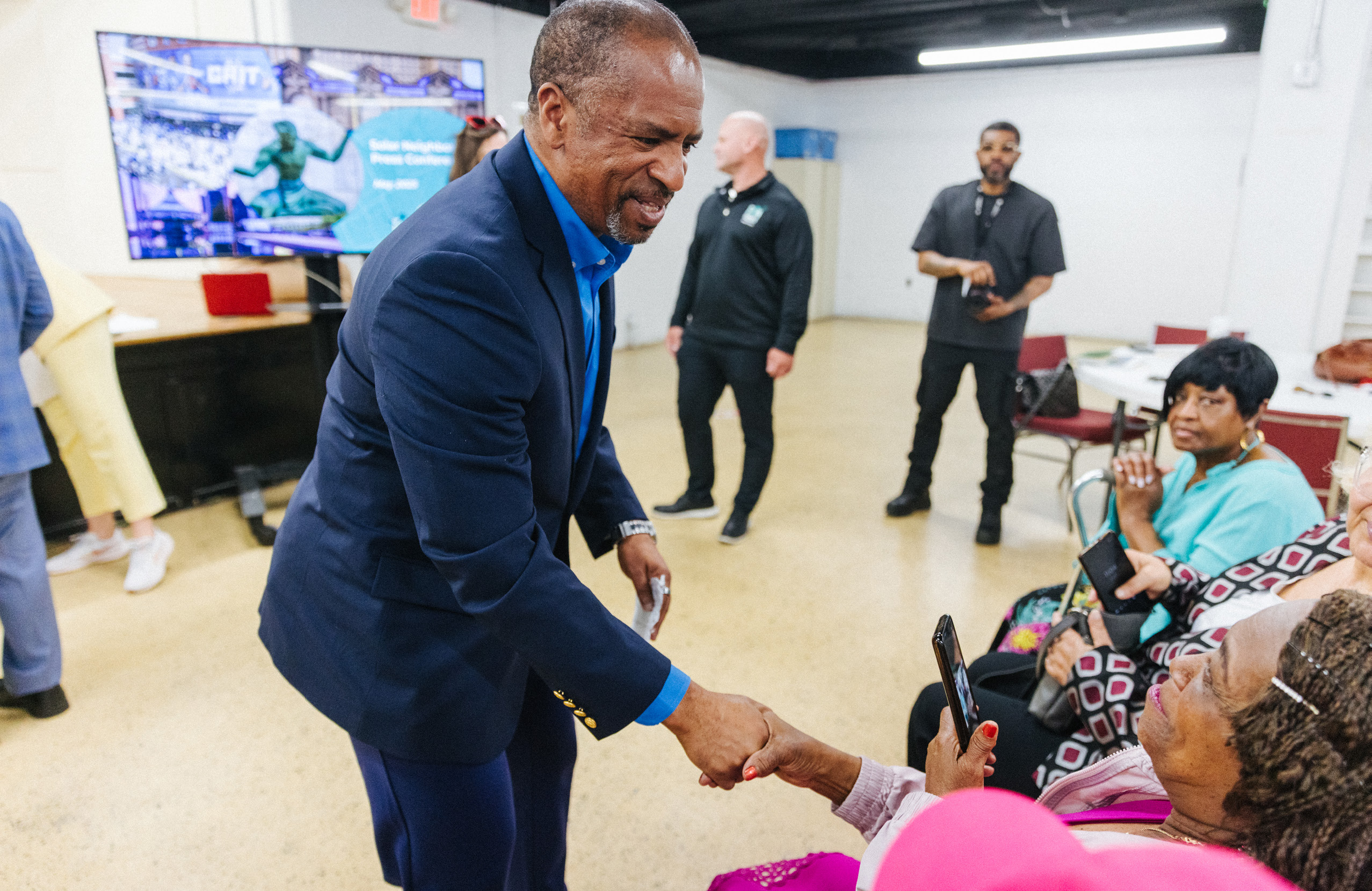Detroit is Focused on Adaptive Solutions that Make Sense
Detroit is reclaiming its urban landscape by preserving historic architecture and transforming vacant land into sources of clean energy. Through the City of Detroit's Historic Designation Program, efforts are underway to protect and restore culturally significant buildings. City-led initiatives such as the Blight to Beauty campaign are repurposing abandoned lots—some of which are being transformed into solar arrays through efforts like the Solar Neighborhoods initiative. These efforts highlight Detroit's commitment to innovation and cultural preservation.
Detroit's durability plan involves creating a city that preserves its history and converts blight into energy.
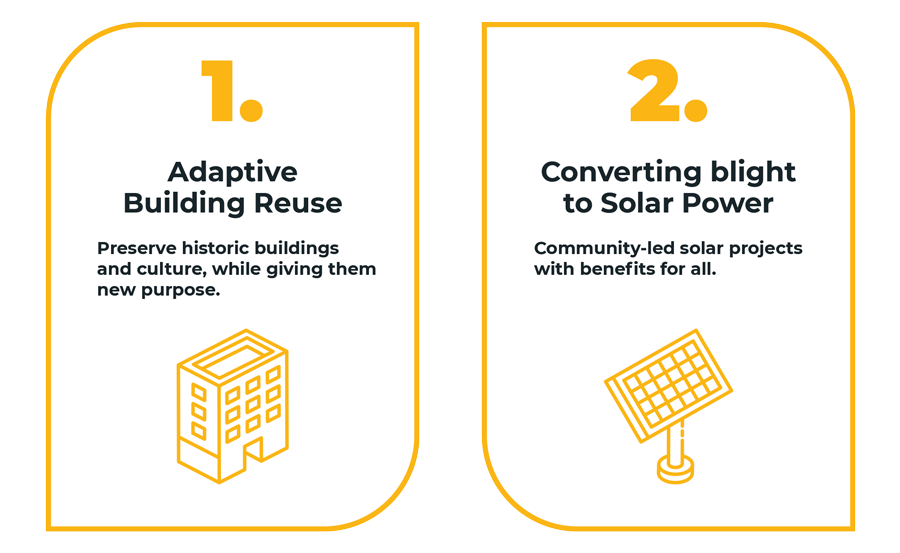
Detroit Adapts Historic Buildings into Modern Reuse
Can you recycle a building without tearing it down? Detroit can! With more than 60 historic structures customized and redesigned, Detroit is one of the nation's leaders in building adaptation. They are reimagined from historic business spaces to uses such as commercial retail, residential living and even as catalysts for regenerative technological innovation. Here's a look at some of our best projects.
What is Adaptive Reuse?
It's the rehabilitation or transformation of existing buildings for other purposes while preserving what made them worth keeping. It turns abandoned churches into coffeehouses, industrial plants into museums, high schools into manufacturing hubs and book depositories into tech business incubators.
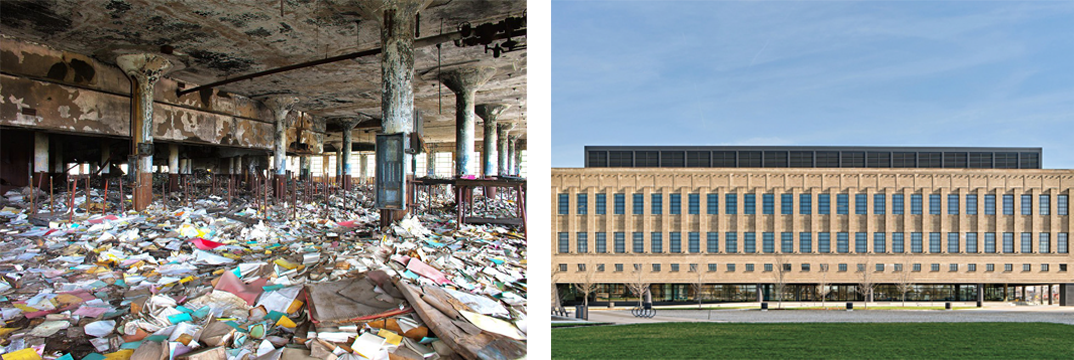
How Do You Adapt and Save a Historic Building?
Detroit's approach to adaptive reuse follows three key principles that ensure success for both developers and communities. First, it has to make sense to the community by creating a tax base, beautifying the neighborhood, or transforming vacant lots into productive spaces. Second, developers must show the potential of what the building can become—for example, the City of Detroit mandated the replacement of all the broken windows at Michigan Central to make it more attractive and help people envision its future. Finally, the city works to make the process easy by streamlining administrative permit requirements and providing discounts where applicable, removing barriers that might otherwise prevent these important preservation projects from moving forward.
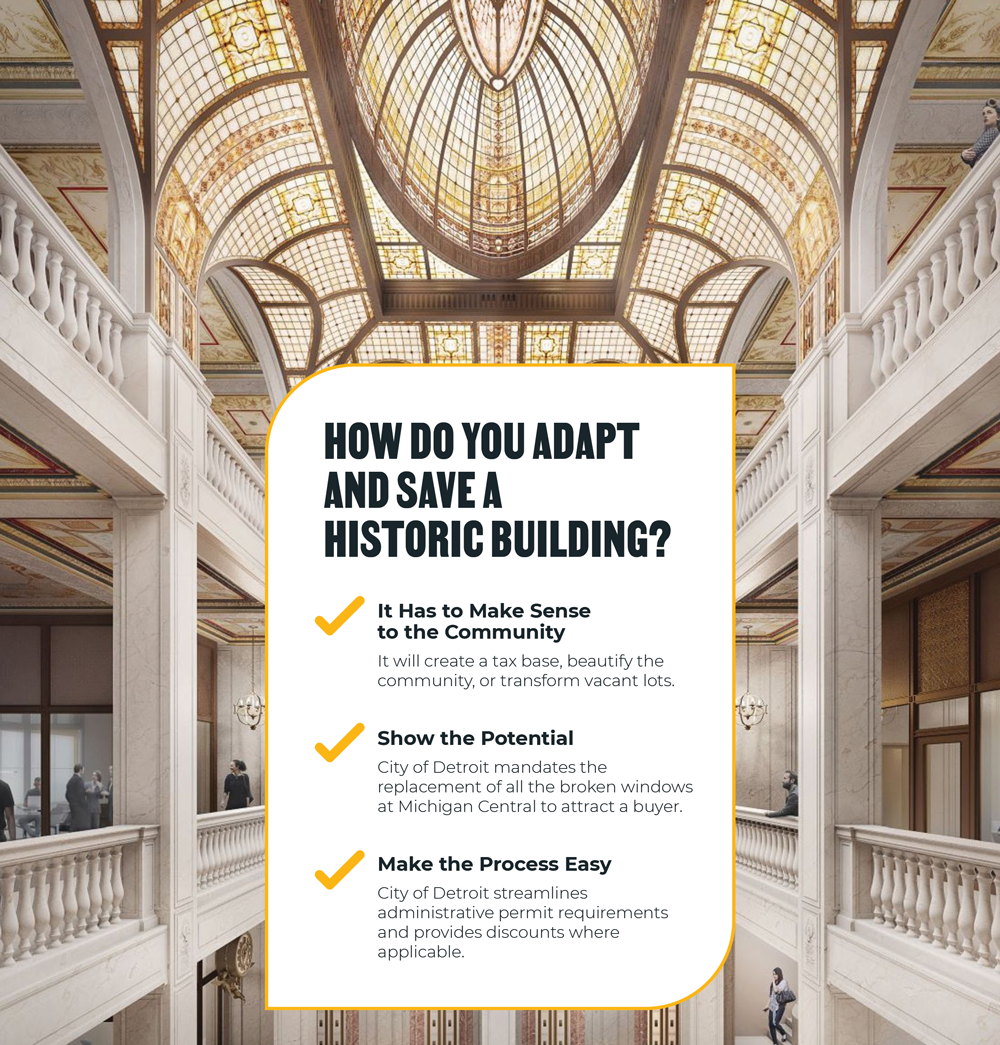
Detroit's Adaptive Reuse Greatest Hits
Michigan Central Campus, 2001 15th St.
(District 6/Corktown) Commercial
Ford Motor Co. invested $950 million into their 30-acre mobility campus and innovation hub.
- The Station at Michigan Central features collaborative and flexible workspaces for businesses dedicated to urban transportation and renewable technology.
- Newlab, formerly the Book Depository building, is a mobility incubator for innovative tech startups.
- The Factory, formerly a clothing factory, houses Ford's autonomous vehicle team.
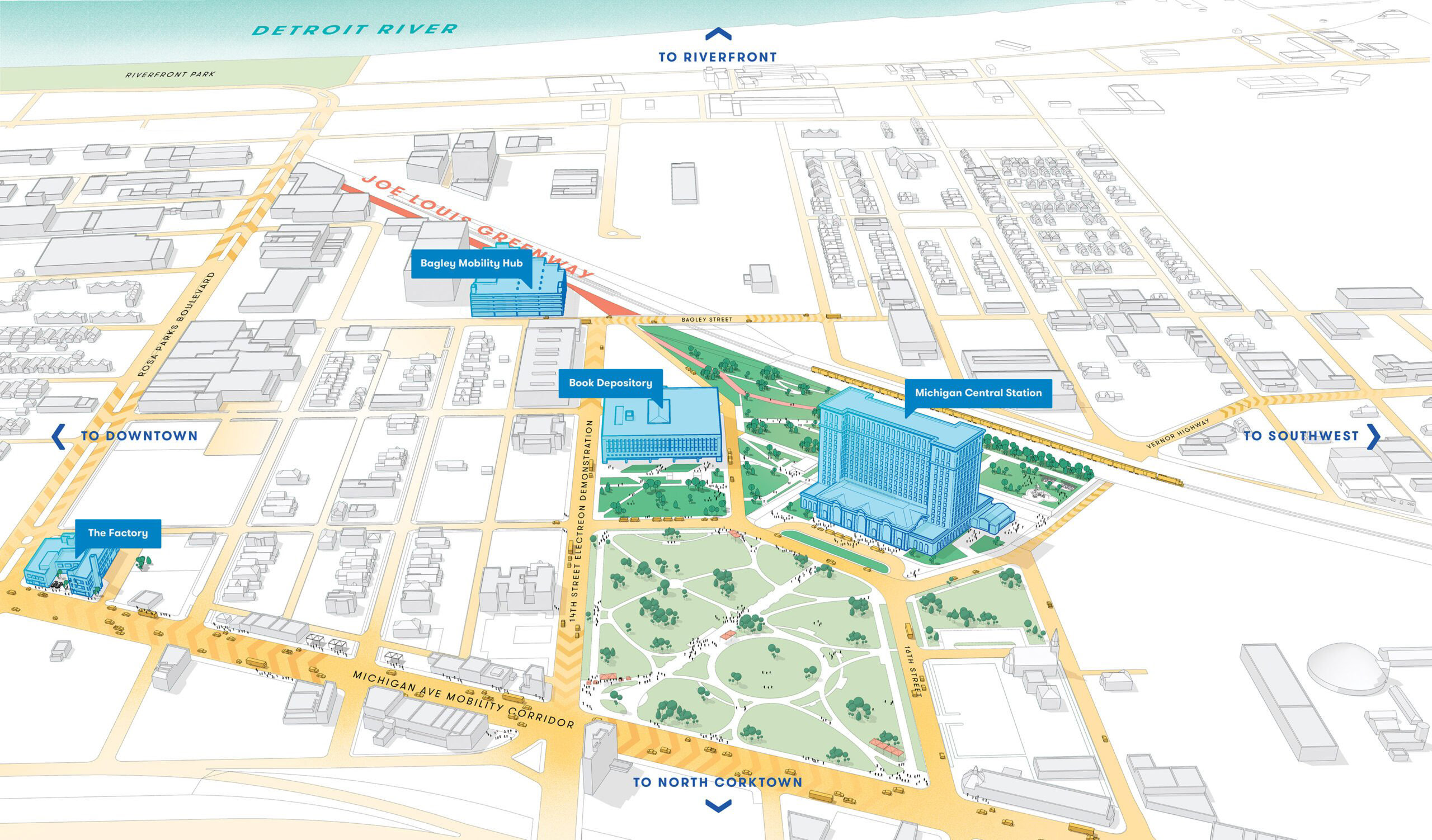
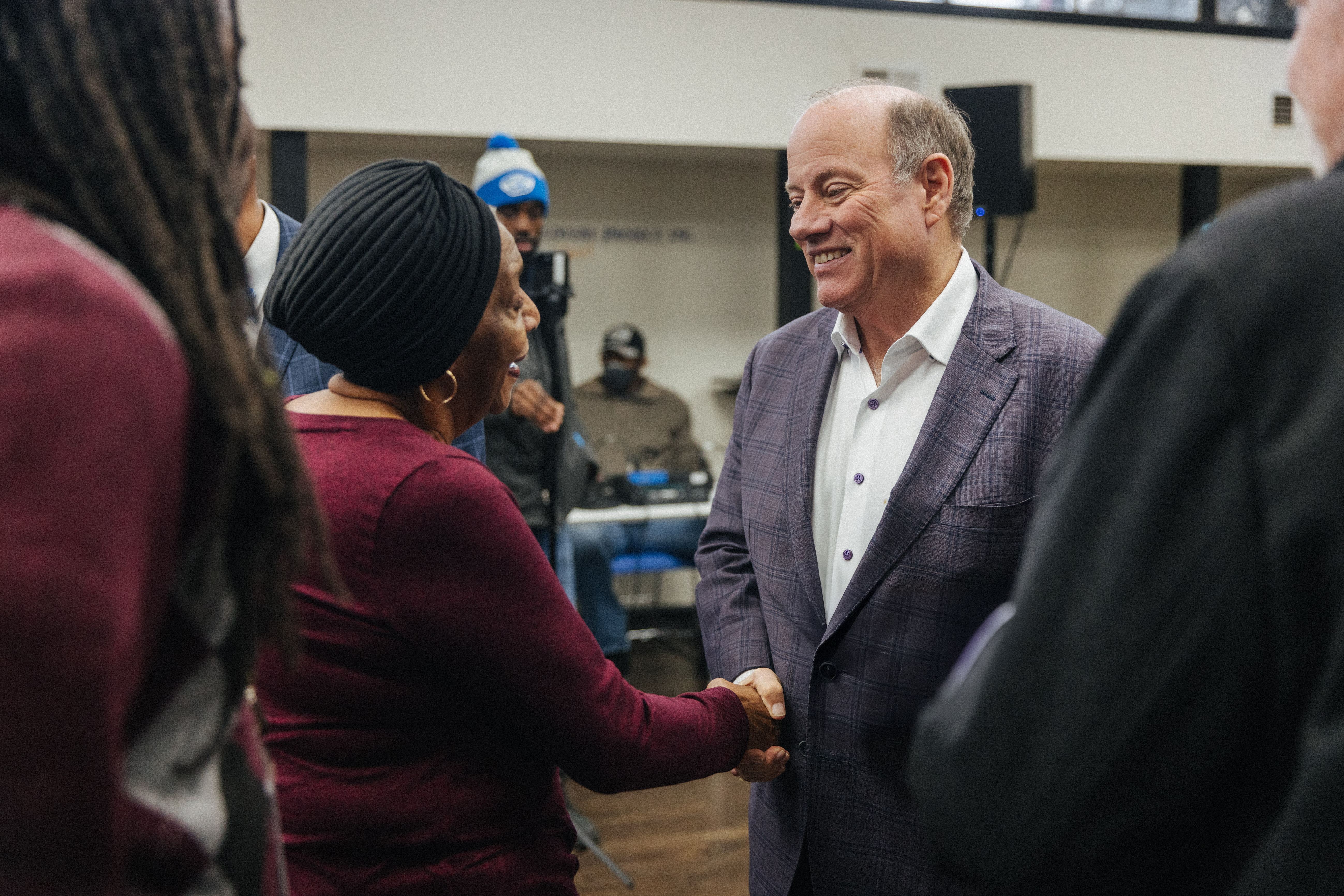
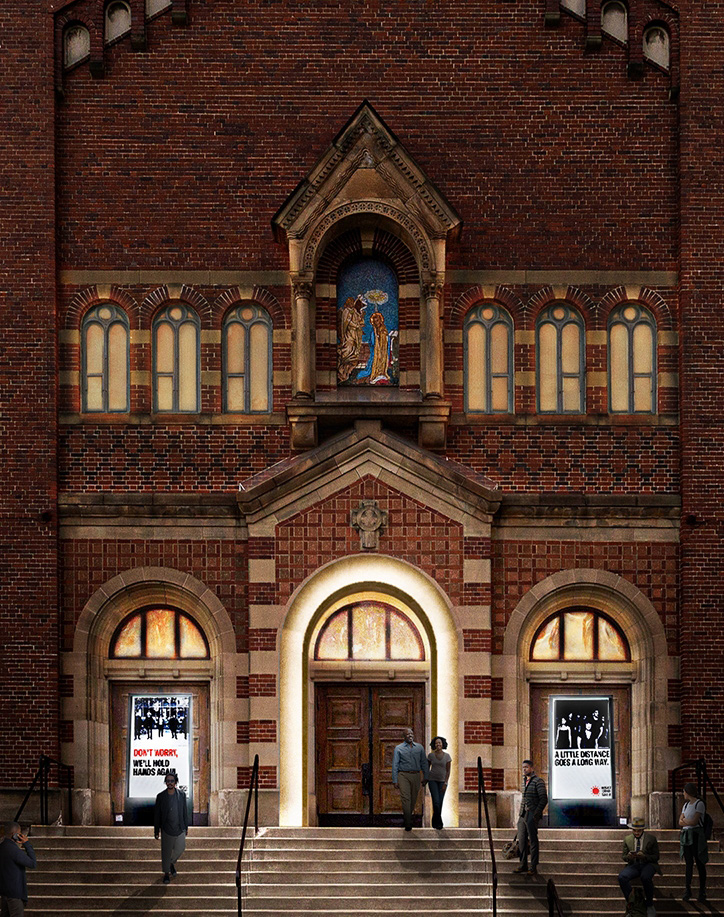
Little Village
(District 3/East Village) Mixed Use
The Little Village has adaptively reconfigured its space into multiple uses.
- The Shepherd formerly Annunciation Roman Catholic Church and Good Shepherd Catholic Church) houses an art gallery, a performance space and the Little Village Library, a public archive of Michigan artists of color. It also provides classroom and workshop space.
- ALEO transformed the rectory into a boutique bed-and-breakfast for artists and a headquarters for the Modern Ancient Brown Foundation, a nonprofit supporting interdisciplinary artists and scholars who identify as members of historically marginalized groups.
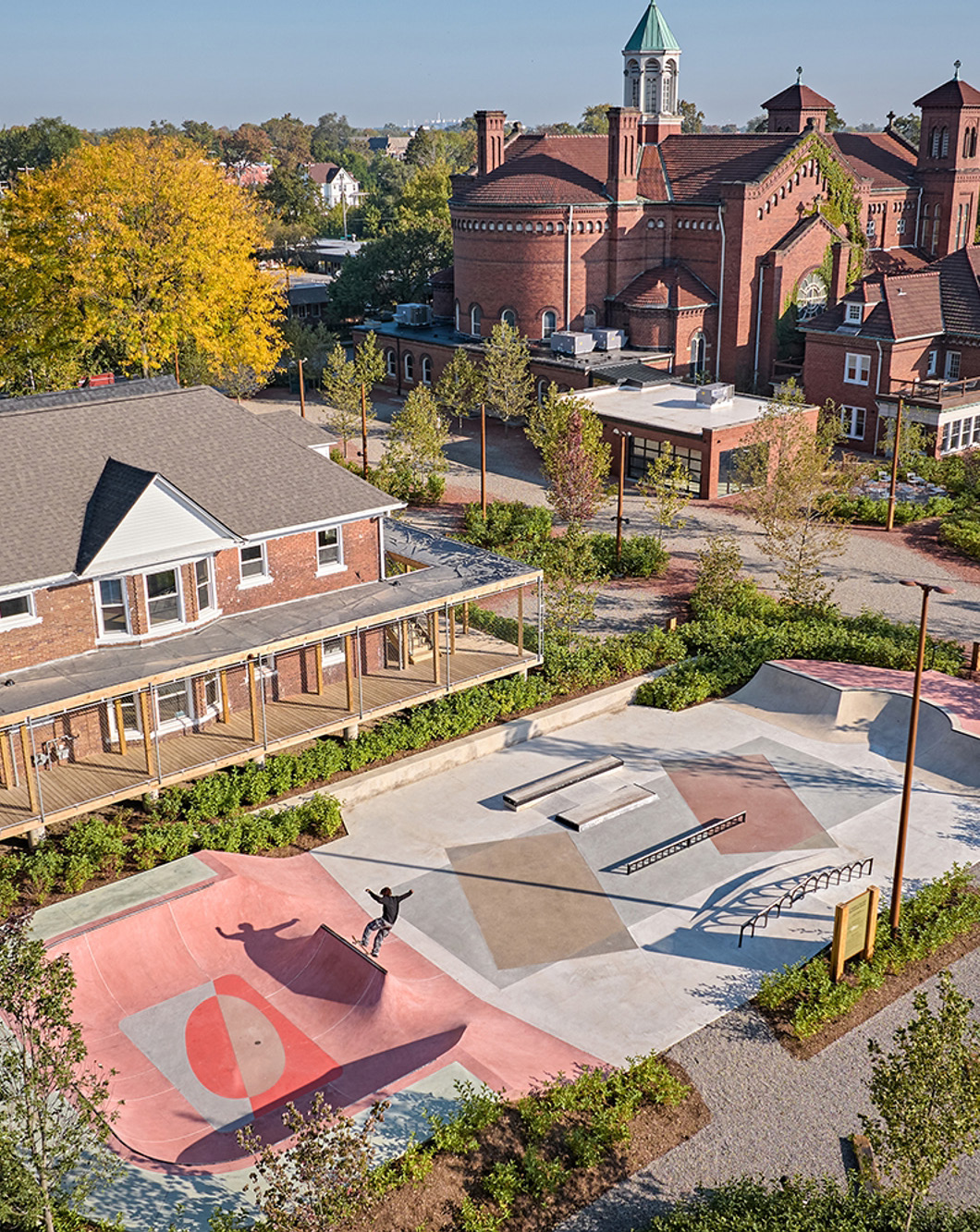
Higginbotham Art Residences, 20119 Wisconsin St.
(District 2/Eight Mile-Wyoming) Residential
The 48,300-square-foot Mediterranean Revival-style William E. Higginbotham School, a historic all-Black elementary school built in 1926, will become the Higginbotham Art Residences, a 100-unit affordable housing redevelopment.
- $8.4 million of the $35.9 million project came from the City's federal American Rescue Plan Act funds.
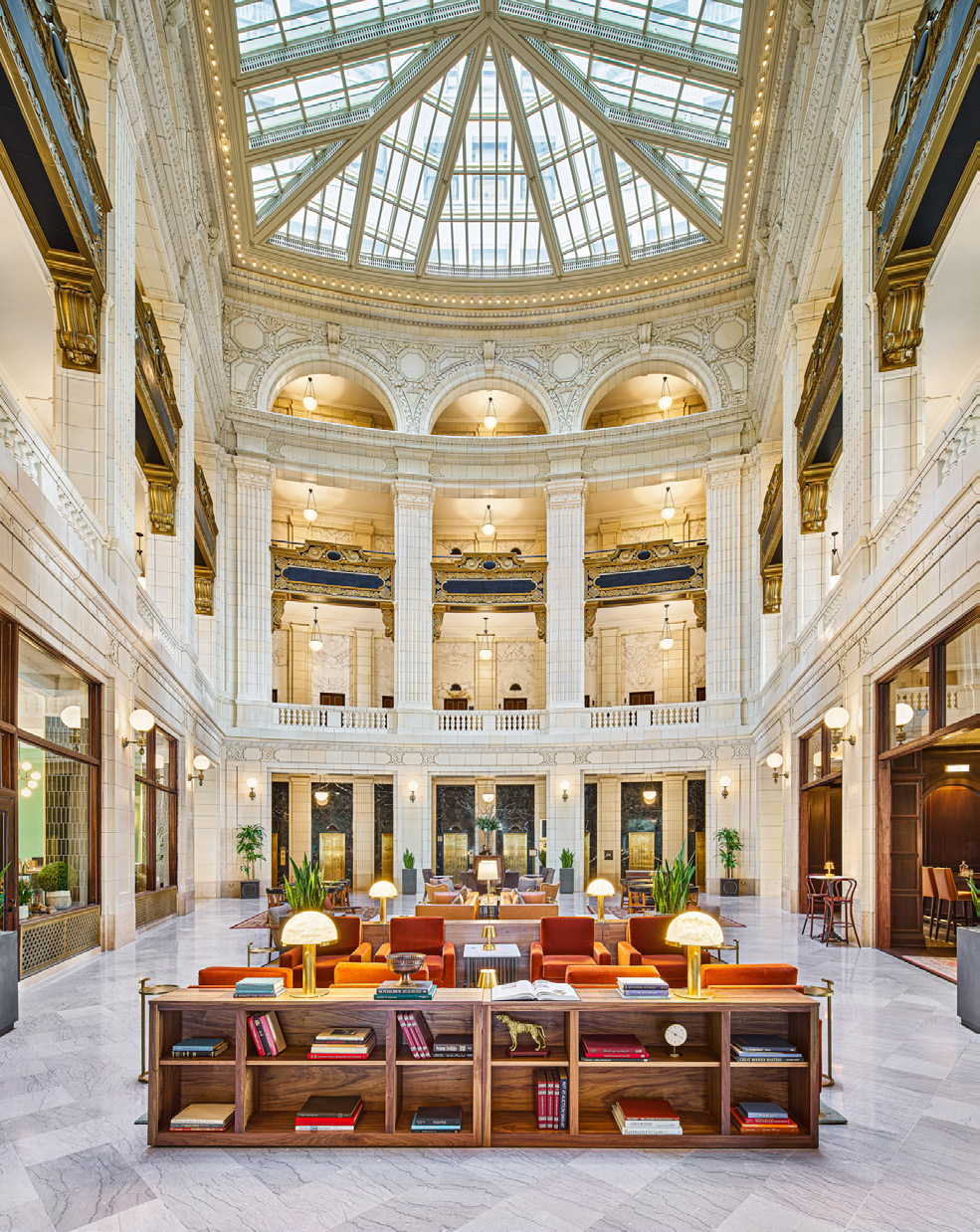
Hotel David Whitney, 1 Park Ave.
(District 6/Downtown Detroit) Mixed Use
In 2014, the historic 1915 David Whitney building underwent a $98 million renovation by the Roxbury Group to become a Marriott Aloft hotel. In 2024, it underwent a further $20+ million upgrade to become the Hotel David Whitney, a Marriott Autograph property.
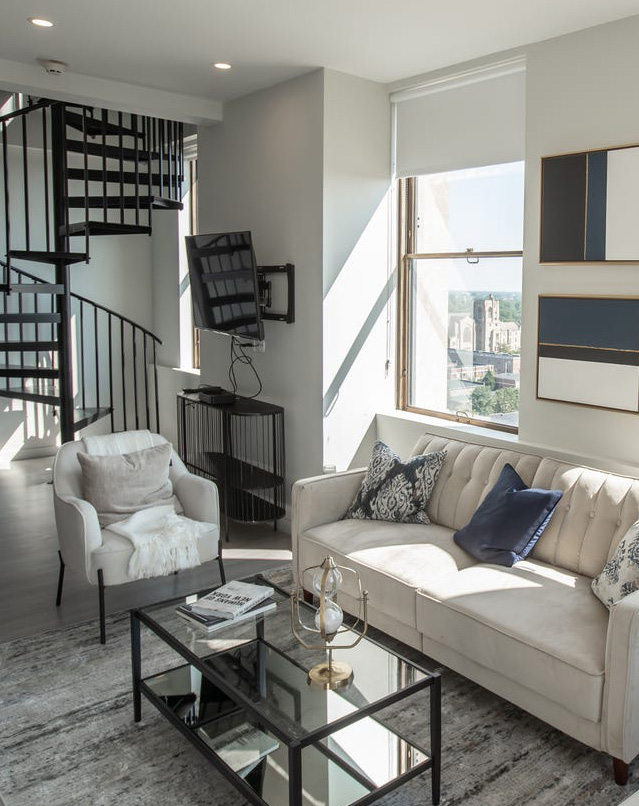
The Kahn, 7430 Second Ave.
(District 5/New Center Commons) Residential
The Kahn was repurposed from the New Center Building, a former retail and office space, into apartments for $70 million. The original design was by Albert Kahn, an architect synonymous with Detroit, whose own offices were located there.
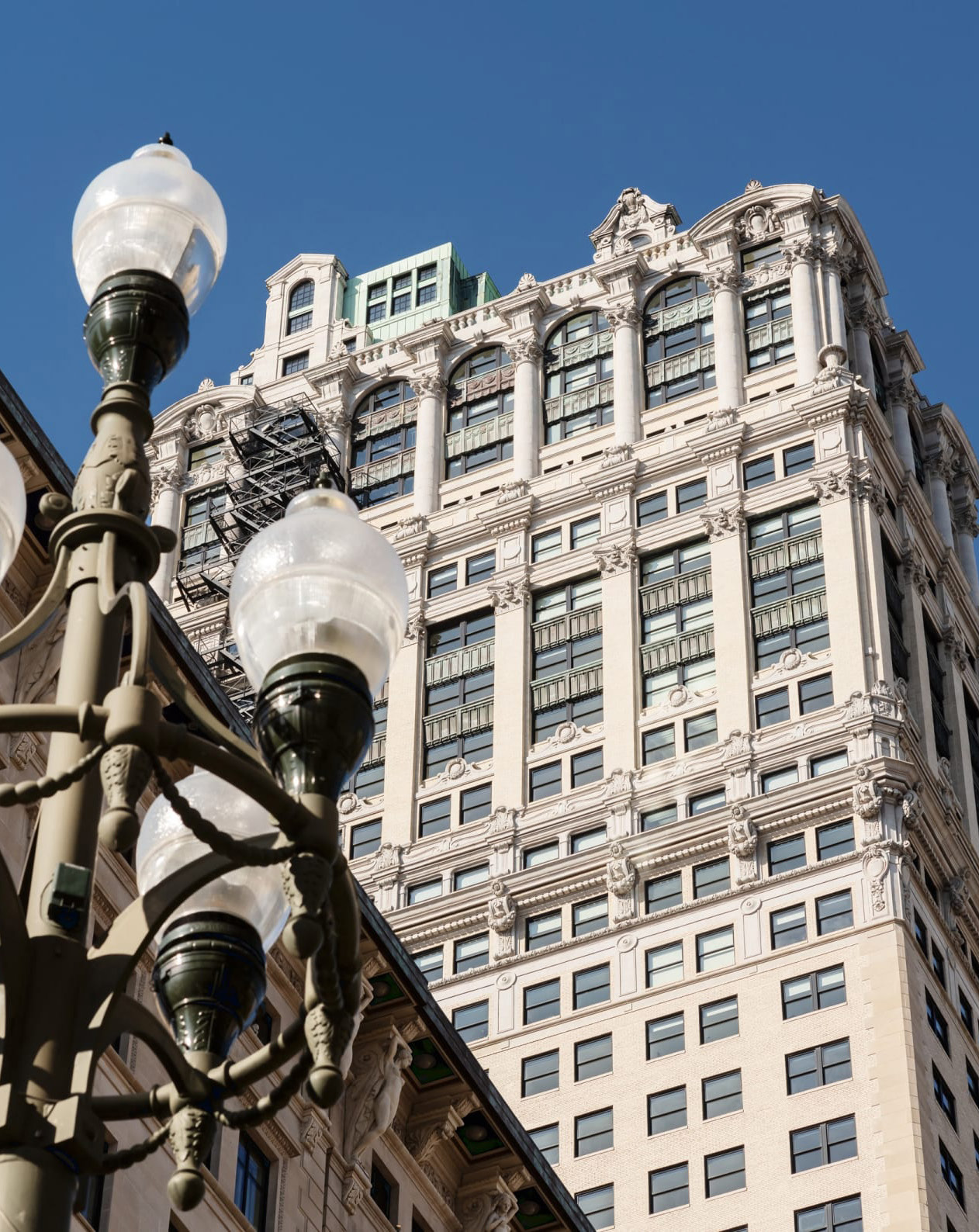
The Residences at Book Tower, 1265 Washington Blvd.
(District 6/Downtown Detroit) Mixed Use
In 1926 when it opened, the Louis Kamper-designed 38-floor, 475-foot skyscraper was briefly the tallest building in Detroit. In 2023, Architectural Digest proclaimed the Book Tower one of "The World's 11 Most Beautiful Repurposed Buildings." Once an office building, the $300 million "ambitious adaptive reuse project" has become a vibrant mixed-use development, blending hotel, retail, office, residential and hospitality spaces.
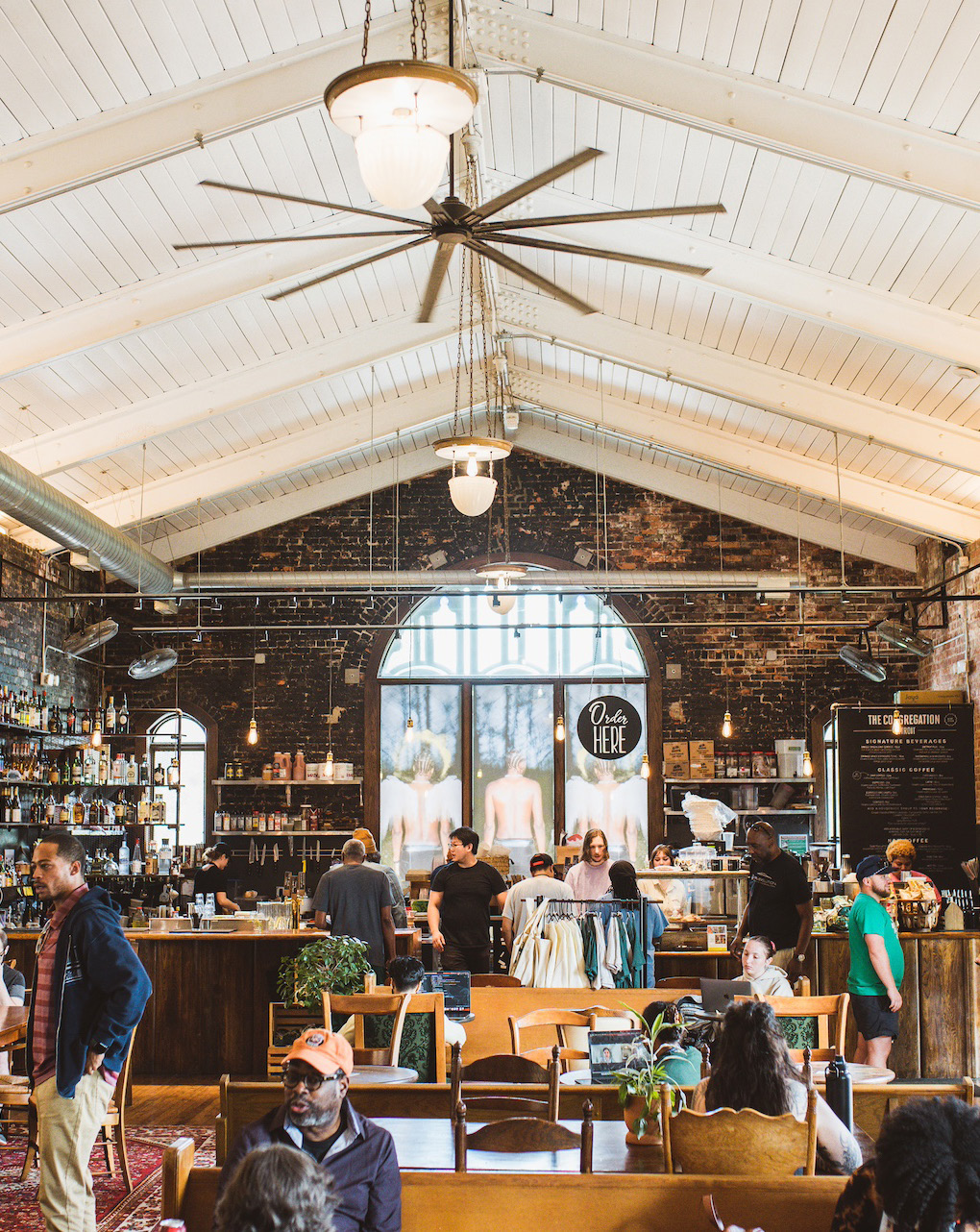
The Congregation Detroit, 9321 Rosa Parks Blvd.
(District 5/Boston Edison) Commercial
Transforming the 1920s-era St. James A.M.E. Church into The Congregation cafe ("Coffee. Cocktails. Community") took the cooperation and efforts of four neighbors in Boston Edison, plus other stakeholders in the community. Congregation restores some elements of the original and adapts others—the spirit of adaptive reuse.
COUNCILMAN LEANS INTO ADAPTIVE REUSE
Built in 1925 as the Redford Village Hall, and later converted to the Redford Branch Library, the English-design style structure on Chapel Street and West McNichols sat defunct for years and later was set for demolition. However, in August 2024, the former library reopened with a new community purpose as an addition to the Detroit Police's 8th Precinct and extended community event space. City Council Member James Tate Jr. played a key role in its restoration, advocating for it to be repurposed.
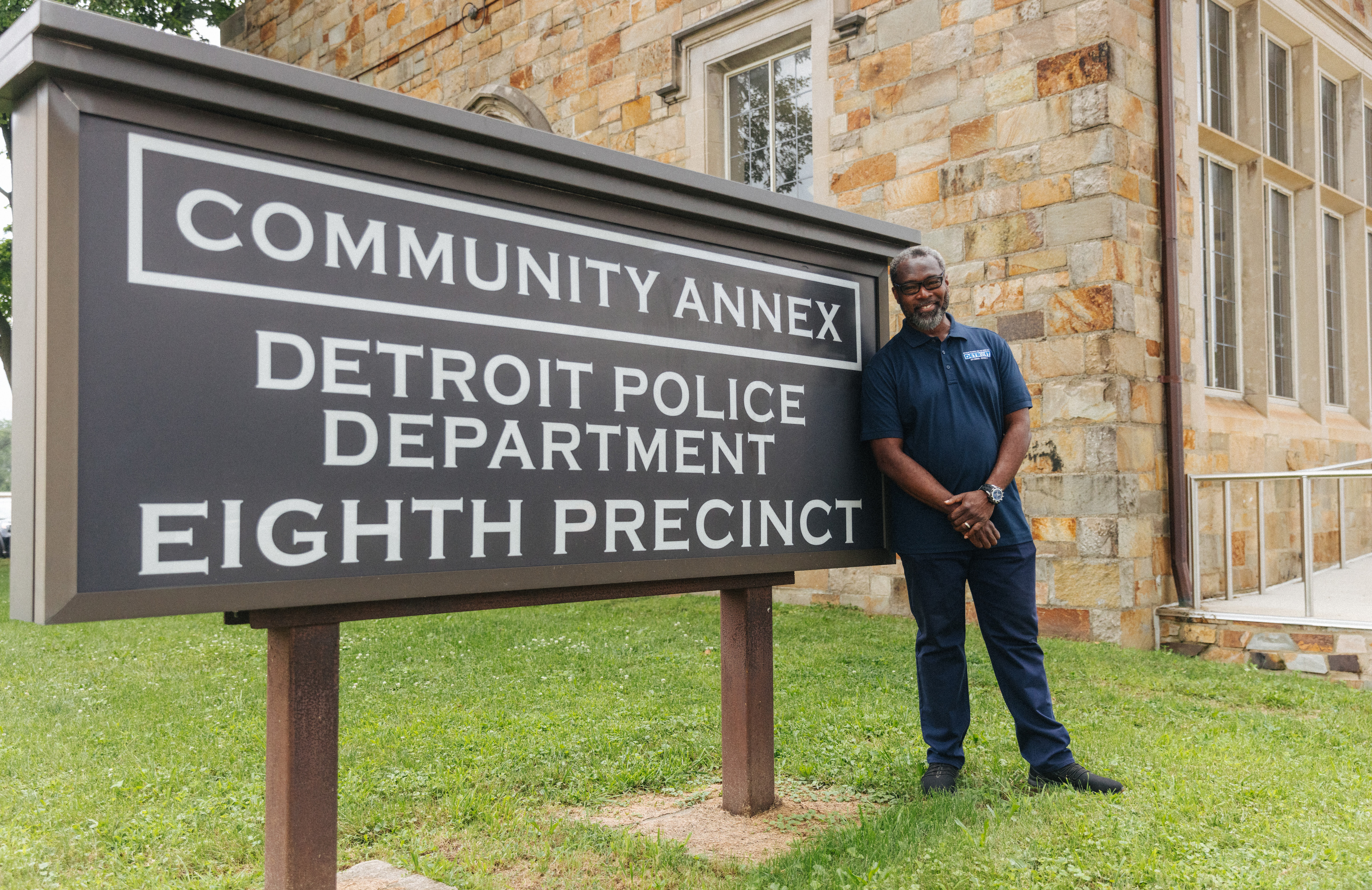
ADAPTIVE REUSE ACROSS DETROIT

Detroit's Bright Idea: Solar Power from Vacant Land
Detroit's solar plan will invest in neighborhoods, reducing blight and providing energy efficient upgrades to residents' houses. In turn, the solar arrays will generate enough energy to offset the electricity used by all 127 city municipal buildings. When powered by fossil fuels, these buildings are responsible for almost 70% of citywide environment-challenging gas emissions in 2018. The City of Detroit, led by Chief Strategy Officer Trisha Stein, found this solution in the intersection between vacant properties and energy needs by building solar panel fields on 165 vacant neighborhood acres. Detroit residents competed to become Detroit’s next solar neighborhood and were chosen based on unanimous support from owner-occupied households. Detroit’s solar strategies were so successful that cities across the country, such as San Francisco and Chicago, reached out to the City of Detroit and Mayor Duggan to teach them how to create collective Earth stewardship in their communities


SOLAR IMPLEMENTATION
PHASE ONE
In July 2024, the first three neighborhoods were named, Gratiot/Findlay, State Fair, and Van Dyke/Lynch. Together, they add 104 acres to the solar project and 21 Megawatts.
PHASE TWO
In January 2025, two more neighborhoods were named, Greenfield Park/I-75/McNichols and Houston Whittier/Hayes, adding 61 acres and almost 10 Megawatts to the Solar Neighborhoods project.
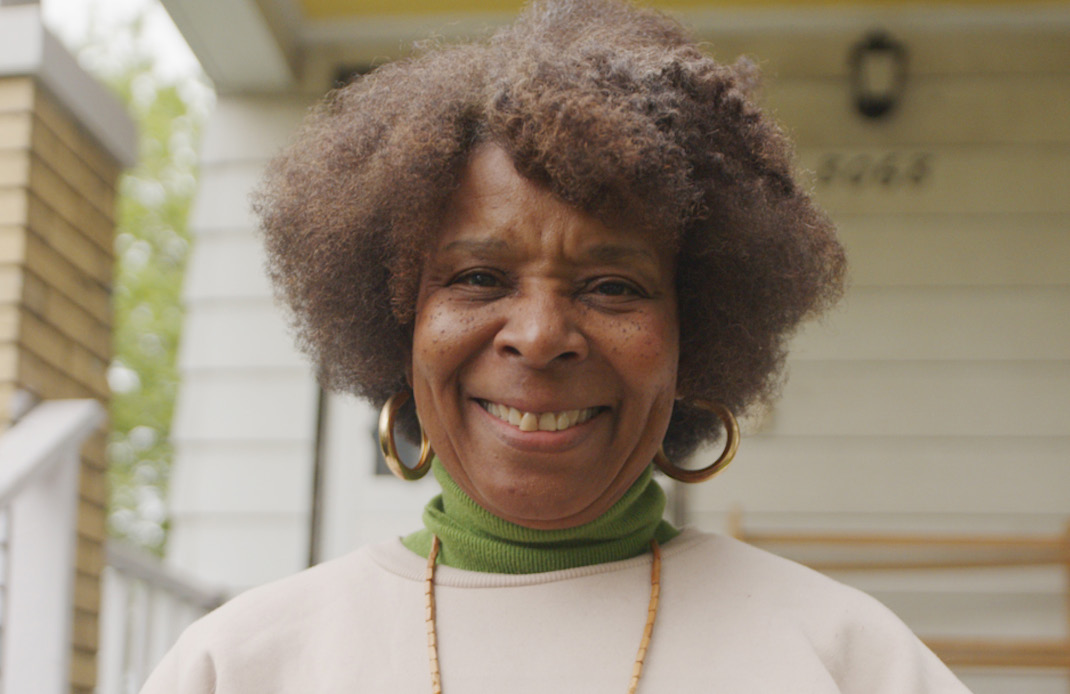
Solar-Neighborhoods Reap Energy Upgrade Benefits
For relocating homeowners, the City of Detroit purchases their home for twice the market value or $90,000 minimum. Affected renters within the solar neighborhoods will receive 18 months of free/paid for rent. Both groups receive moving expenses and relocation services. Neighbors choosing to stay will receive community benefits of $15,000 to $25,000 in energy-efficiency upgrades for their home.
Detroit Solar Residents Select Energy Upgrades
Weatherized windows; roof repairs; energy-efficient appliances, lighting, furnaces or hot water heaters; home insulation and air sealing; smart thermostats; battery backup and residential solar panels.
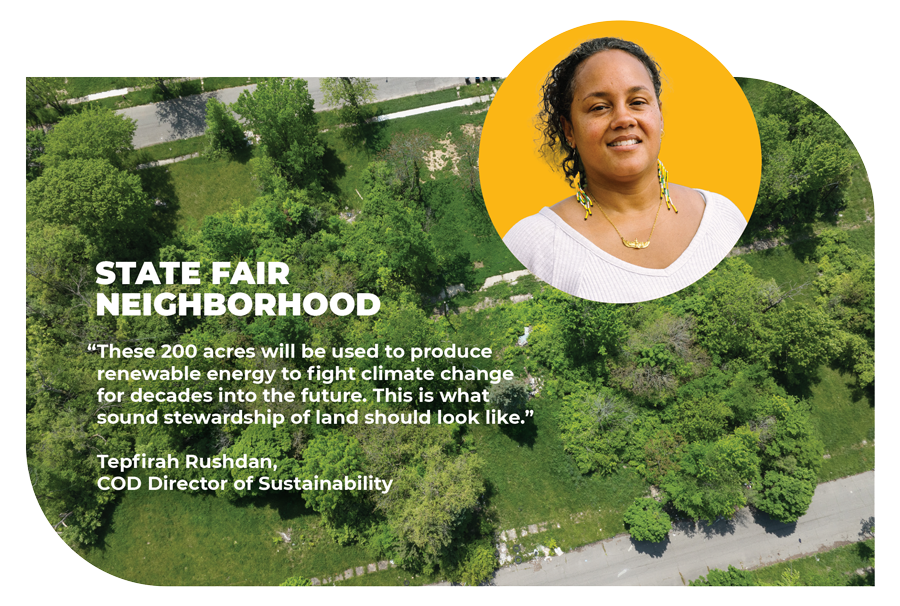
Detroit Blazes a Trail to an Energy Secure Future
Detroit is standing on the shoulders of its past as it looks to its future. By adaptively reusing its classic architecture and embracing renewable energy practices, Detroit has become a low-carbon model for the nation and the world.
